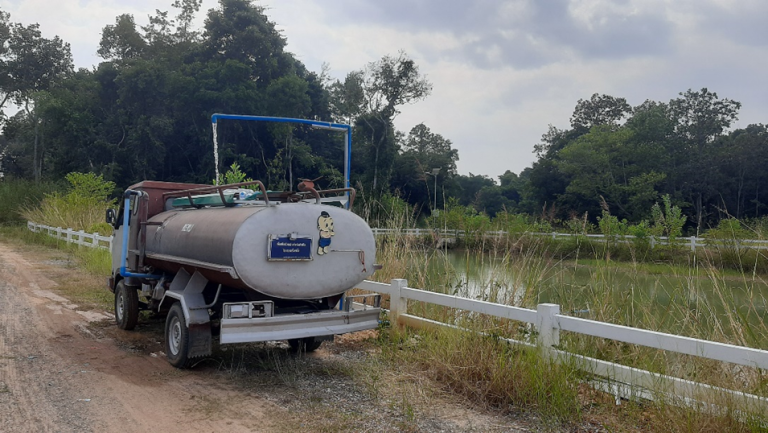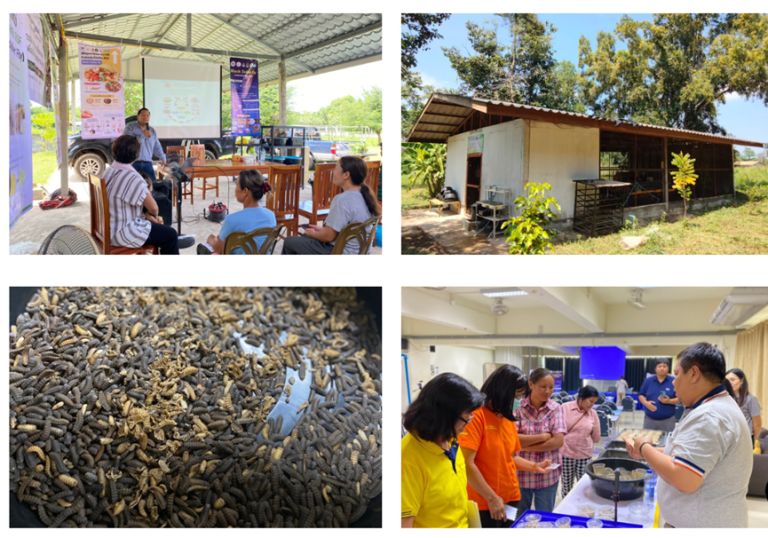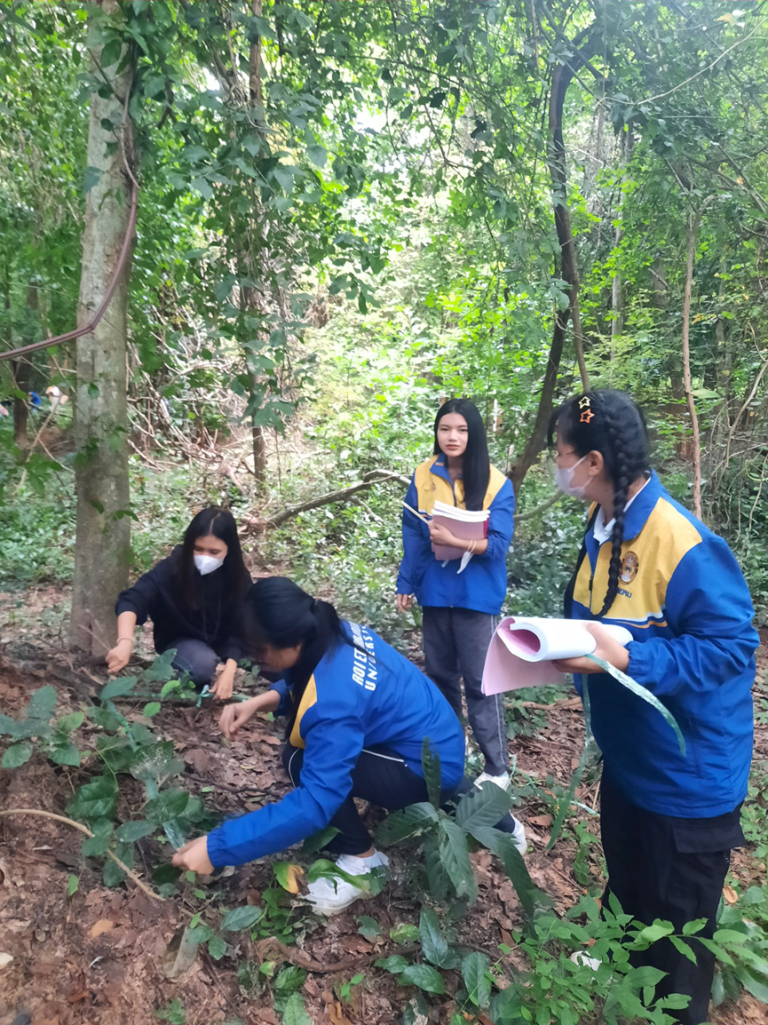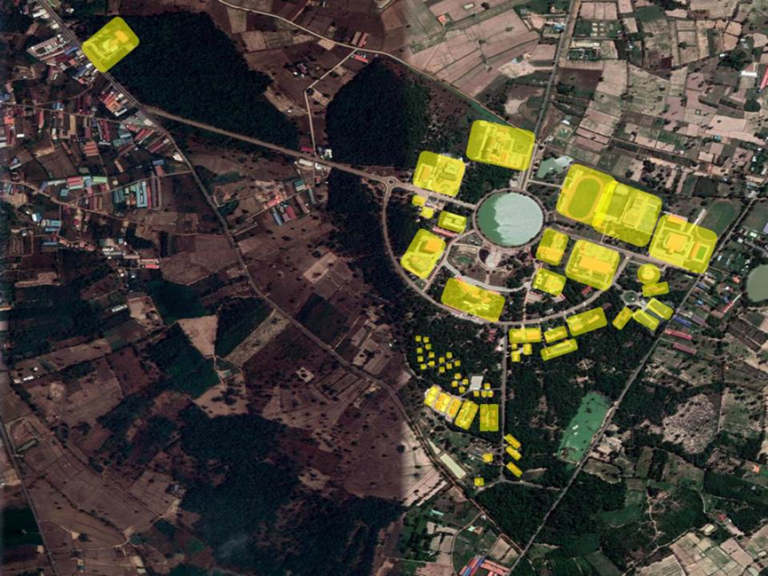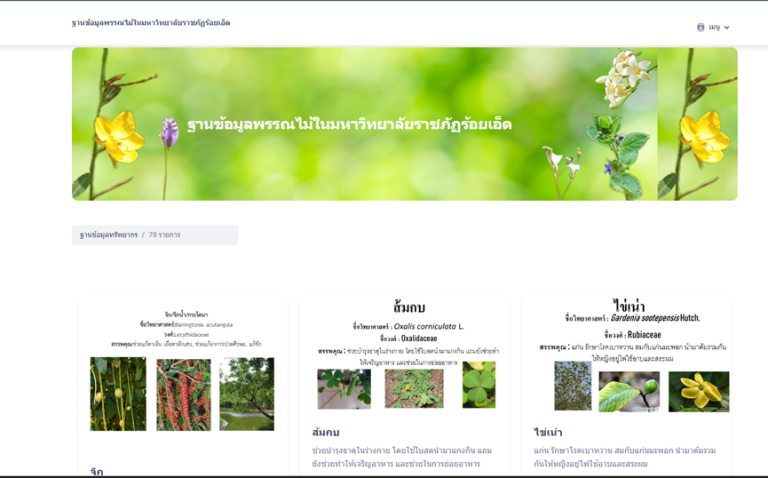According to the 5-year strategic plan (2023-2027) and the announcement of the policy on conserving natural resources, environment, safety, and occupational health in 2023 (CE), Roi Et Rajabhat University is actively engaged in the conservation of genetic diversity of plants and animals. This involves conducting surveys to assess the diversity of flora and fauna within the university, establishing a database of plant species, integrating biodiversity conservation concepts into teaching and learning, regularly inspecting and safeguarding against the introduction of exotic species, and prioritizing the conservation of vulnerable plant and animal species.
The green areas surrounding the university campus are rich in diverse plant species. Some plant species identified are listed on the IUCN Red List, such as the Gardenia sootepensis, while others, like the Gnetum montanum, are ancient non-flowering plants.
Furthermore, the green areas of the university campus serve as habitats for various wildlife, both large and small. During certain seasons, they become habitats for migratory birds. Additionally, protected wildlife species, such as the Varanus salvator, have been observed within the university. The Varanus salvator is a protected species under the Thai Wildlife Conservation Act of 2019 (CE 2562).

Figure 1: Map showing the green areas of Roi Et Rajabhat University’s campus.
Source https://maps.app.goo.gl/fPtbpPSvFZyH8H4U6

Figure 2: Gnetum montanum, a plant species found in the green areas of Roi Et Rajabhat University’s campus.
Source: Assoc. Prof. Dr. Aeumporn Jansongduang (2023)https://sites.google.com/reru.ac.th/reru-environment-safety-report/activities/biodiversity-learning-space

Figure 3: Varanus salvator, a species found at Roi Et Rajabhat University.



